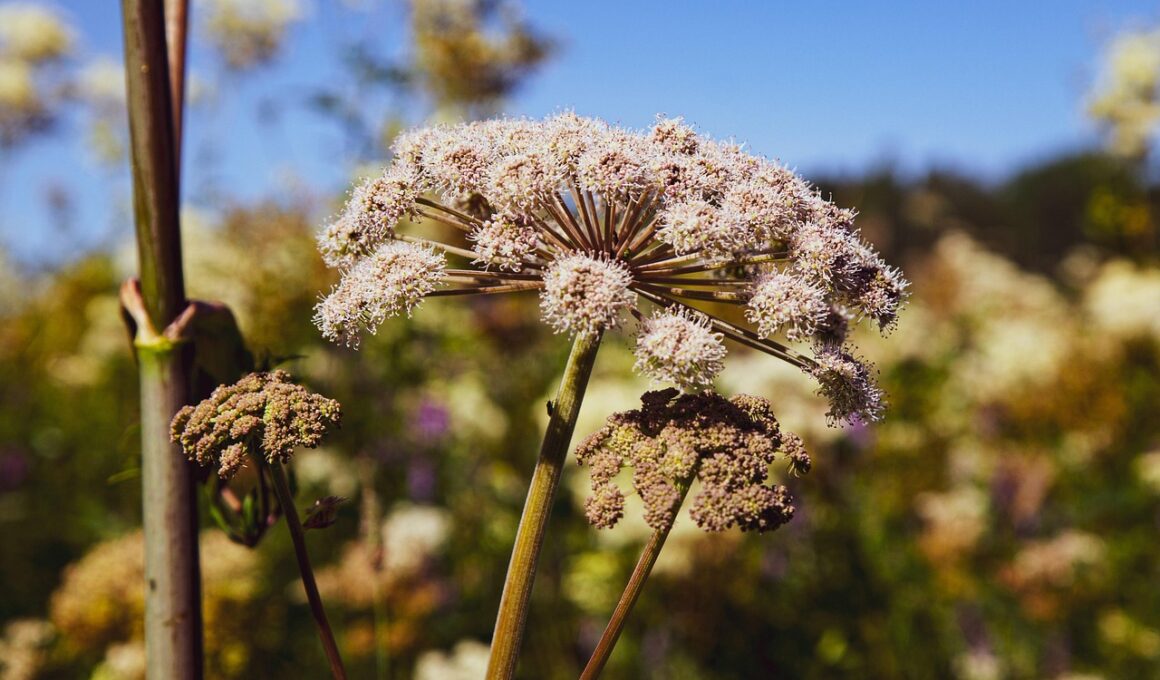Recognizing Toxic Plant Ingestions in Dogs and First Aid Measures
Identifying the signs of toxic plant ingestion in dogs is crucial for pet owners. Many common household and garden plants can pose a serious threat to your dog’s health. Symptoms may vary, but key indicators often include vomiting, diarrhea, lethargy, and changes in appetite or behavior. Certain plants, such as oleander, azaleas, and foxglove, can cause severe reactions or even be fatal if ingested. Immediate recognition of these symptoms can make the difference between life and death. If you suspect that your dog has consumed a toxic plant, it is essential to gather information on the specific plant and contact your veterinarian. Familiarizing yourself with the plants in your home and yard is vital for the ongoing health of your furry friend. Be proactive; take notes on potential toxic plants to share with your veterinarian if necessary. Education and awareness can lead to better outcomes during emergencies. Always keep emergency contact information handy to expedite help when it matters most. Staying informed will keep your pet safe and enhance your ability to respond effectively in times of crisis.
In addition to knowing what to look for, it is essential to understand basic first aid measures to take when responding to suspected plant poisoning. First, assess your dog’s symptoms and determine how urgent the situation is. If your dog is exhibiting severe symptoms, such as difficulty breathing or seizures, seek veterinary assistance immediately. For less severe reactions, try to identify the plant eaten and check its toxicity level using reliable resources like the ASPCA’s website. If time allows, ensure your dog has access to water to help flush toxins out of their system. Do not induce vomiting without consulting a veterinarian, as this can sometimes do more harm than good. For certain plants, inducing vomiting can cause additional injury. If your dog shows mild symptoms, consider monitoring their condition at home while keeping an eye on their water intake and general behavior. Remember, early intervention is key! Simple first aid steps can prevent a minor incident from escalating into a life-threatening emergency. Being prepared will not only reduce anxiety but also empower you to handle these situations with confidence.
Common Toxic Plants to Watch For
Being aware of common plants that are toxic to dogs is essential for every pet owner. Some prevalent offenders include common garden plants such as azaleas, which can cause severe digestive issues and heart problems if ingested. Similarly, the lilies are particularly dangerous; they can lead to kidney failure, especially if not treated promptly. Another hazard within many households is the sago palm, which contains a toxin harmful to the liver and can be fatal. The English ivy plant, though often favored for home decor, can create gastrointestinal distress in dogs if nibbled on. Foxglove, commonly used in gardens, poses a serious threat due to its cardiac glycosides that can severely affect heart function. Finally, consider the oleander, which is highly toxic and affects the entire body. Removing these dangerous plants from your surroundings can prevent exposure. Also, consider alternatives that are safe for pets. Educate your family about these toxic plants to ensure safety for your furry companions. Keeping a watchful eye on your dog among plants is another measure you should take to foster a safe living environment.
Another vital step is to create a safe space for your dog, one that minimizes their exposure to toxic plants. This may involve rethinking your garden design or indoor plant arrangements to eliminate potential hazards. If possible, choose non-toxic plants to enhance your home without risking your dog’s health. Once the toxic plants are removed from your living spaces, keep a close eye on your dog’s behavior while outdoors, especially in new environments. If you take your dog on walks, be vigilant when they are exploring, as they may come across unfamiliar plants. Train your dog to avoid eating plants while outside, and reinforce this behavior with consistent commands. Additionally, consider utilizing alternative training methods, such as positive reinforcement, to encourage healthier behaviors. Finally, foster a strong relationship with your veterinarian, scheduling regular check-ups to address health concerns proactively. Always feel free to ask questions about the plants in your home and garden, as they can offer valuable insight into maintaining a safe environment. This collaborative approach will prepare you to act swiftly in case of an emergency involving plant ingestion.
Understanding Veterinary Assistance
If your dog is suspected of ingesting a toxic plant, understanding when and how to seek veterinary assistance is imperative. Immediate action could potentially save your dog’s life if they exhibit severe symptoms. Be prepared with as much information as possible: identify the plant, note the symptoms, and report the timing of ingestion. When you arrive at the clinic, be ready for your veterinarian to perform a thorough examination, potentially including blood tests or imaging. Often, treatment will include stabilization and supportive care while the toxins are eliminated from their system. Time is of the essence; for some plants, early intervention drastically improves the prognosis. Expect to follow up with the veterinarian closely, and adhere to prescribed treatment plans, including any specific dietary changes or medications. Maintain open communication with your vet, discussing any ongoing symptoms or concerns. Having robust vet records will aid in diagnosing and treating similar future incidents. Additionally, stay informed about preventative measures to avoid further accidents. Strengthening this veterinarian relationship creates an added layer of safety for your beloved pet and will ease anxiety during emergencies.
Moreover, developing an emergency plan is beneficial for every pet household. Prepare a list of toxic plants that have been identified in your area, as well as a contact list for your veterinarian and local animal hospitals. Keep this information easily accessible, perhaps on your refrigerator or mobile device, so you can quickly reference it in an emergency. Keeping a pet first-aid kit stocked with essentials like activated charcoal, gauze, and other supplies can be invaluable when it comes to handling emergencies. Your kit should also have contact numbers for pet poison control hotlines, such as the ASPCA Animal Poison Control Center. Understanding first aid techniques will enhance your readiness to act promptly. Familiarize yourself with the symptoms of plant poisoning and basic treatment steps between veterinary visits. Sharing this information with all household members ensures everyone is prepared to respond quickly. Regular training sessions can solidify these essential skills, ensuring you are ready for any situation. By being proactive and prepared, you are building a safeguard for your dog’s health and wellbeing.
Final Thoughts on Plant Safety for Dogs
Overall, safeguarding your dog from toxic plants involves vigilant observation and proactive measures. By educating yourself about toxic and non-toxic plants, you can greatly reduce the risk of ingestion. Create a safe and secure environment wherein your dog can explore without fear of harmful plants. Regularly inspect areas where your dog spends time, ensuring that no toxic flora is lurking around. Should an incident of poisoning occur, remain calm but act quickly by contacting a veterinarian. Collecting as much information as possible will aid the veterinary staff in administering the best care. Maintaining open lines of communication with your veterinarian can strengthen your understanding of plant toxins and your dog’s overall health. In case of long-term effects from ingestion, follow veterinarian advice for any necessary lifestyle adjustments. Regular health checks will also contribute significantly to sustaining your dog’s wellbeing. In addition, staying engaged in ongoing education about dog health and safety will further enhance your ability to safeguard your pet’s life. Through these average precautions and awareness, you can ensure your dog’s safety and longevity while enjoying their environment.
Lastly, maintaining a clean and safe living area will create a more secure space for your dog. Cleaning up any fallen leaves, fruits, or flowers promptly will eliminate the risk of accidental ingestion. Educate any visitors or family members about your dog’s environment, particularly regarding hazardous plants. This awareness can prevent potential dangers when your pet interacts with others. Designate certain areas as off-limits, especially if you know potential hazards are present, like a garden filled with toxic plants. Regular walks in areas known to be free from harmful plants will enhance your pet’s health. Make sure your dog is supervised at all times while in unfamiliar environments to quickly intervene if they try to eat something unsafe. Understanding the potential dangers of toxic plants for dogs can motivate you to create a better living space. By implementing these strategies, you build a safer atmosphere for your four-legged friend. Developing good habits and ensuring an open line of communication with your vet are foundational to maintaining your dog’s health. As you navigate pet care, remain committed to creating a healthy and enjoyable lifestyle for both you and your dog.


